Election day is upon us, and with it come many eyes on battleground states like North Carolina that will determine who will be the next President of the United States. Polling indicates that both the presidential and most other statewide elections are going to be close this year. While eyes will be on these top-of-the-ballot races, there are many districted elections to keep an eye on in North Carolina that may determine the majority in Congress and the makeup of the state legislature.
Congress
Of North Carolina’s fourteen congressional seats, only the First District is considered competitive. This is one of only three competitive congressional seats in the southeast (with the other two in Virginia). The John Locke Foundation rated the district as an R+0 in our analysis of North Carolina’s most recent congressional maps.
While Republicans have not represented the North Eastern part of North Carolina in Congress since 1883, this year, they could take it if Democrat’s turnout rates do not pick up during election day. While Democrats have a considerable registration base, this does not tell the whole story since unaffiliated voters typically favor Republicans in this district.
If the 2024 map was used in the 2020 election, Republicans would have narrowly lost this district by roughly 4,500 votes. Currently, Democrats are behind their 2020 early voting numbers by 35,800 votes. If Unaffiliated voters keep to their pattern of breaking toward Republicans that have had in both 2020 and 2022 this district could go to Republicans.
State Senate
The Civitas Partisan Index (CPI) found that Republicans have twenty-three safe and likely seats while Democrats hold seventeen. This leaves five seats considered toss-ups and five more considered lean Republican seats. In order to get a majority, Republicans need only twenty-six seats, while a supermajority would require thirty.

Of the ten seats identified by the CPI as toss-ups or leans the ones to watch are the following:
District 4: Greene, Wayne & Wilson counties
District 7: New Hanover (part)
District 11: Franklin, Nash, Vance
District 13: Wake (part)
District 18: Wake (part) and Granville
District 42: Mecklenburg (part)
Republicans have a baseline advantage in twenty-eight seats. In addition, incumbents like Danny Britt, who traditionally overperform in their districts, not only have a financial and incumbency advantage, but their districts are trending Republican.
State House
The CPI found that Republicans have fifty-two likely or safe seats in the state House, while Democrats hold forty-two seats securely. Either party will need sixty-one seats to gain a majority and 72 seats to garner a supermajority.

Much like the Senate, though several races fall within lean seats, there are some seats like District 47 that are likely to go in favor of the incumbent due to them historically overperforming in their district. The districts to watch in the North Carolina House are:
District 5: Camden, Gates, Herford, and Pasquotank
District 9: Pitt (part)
District 12: Greene, Jones, and Lenoir
District 24: Nash(part), and Wilson
District 25: Nash (part)
District 32: Granville and Vance
District 35: Wake (part)
District 37: Wake (part)
District 98: Mecklenburg (part)
District 105: Mecklenburg (part)
District 115: Buncombe (part)
While Republicans are likely to pick up a majority in the House, the question will be if they can get a supermajority in the chamber. Several Republican incumbents are in slightly Democratic-favored districts, and it will be the question of election day turnout and Unaffiliated splits on whether they will be returning to Raleigh next year.
